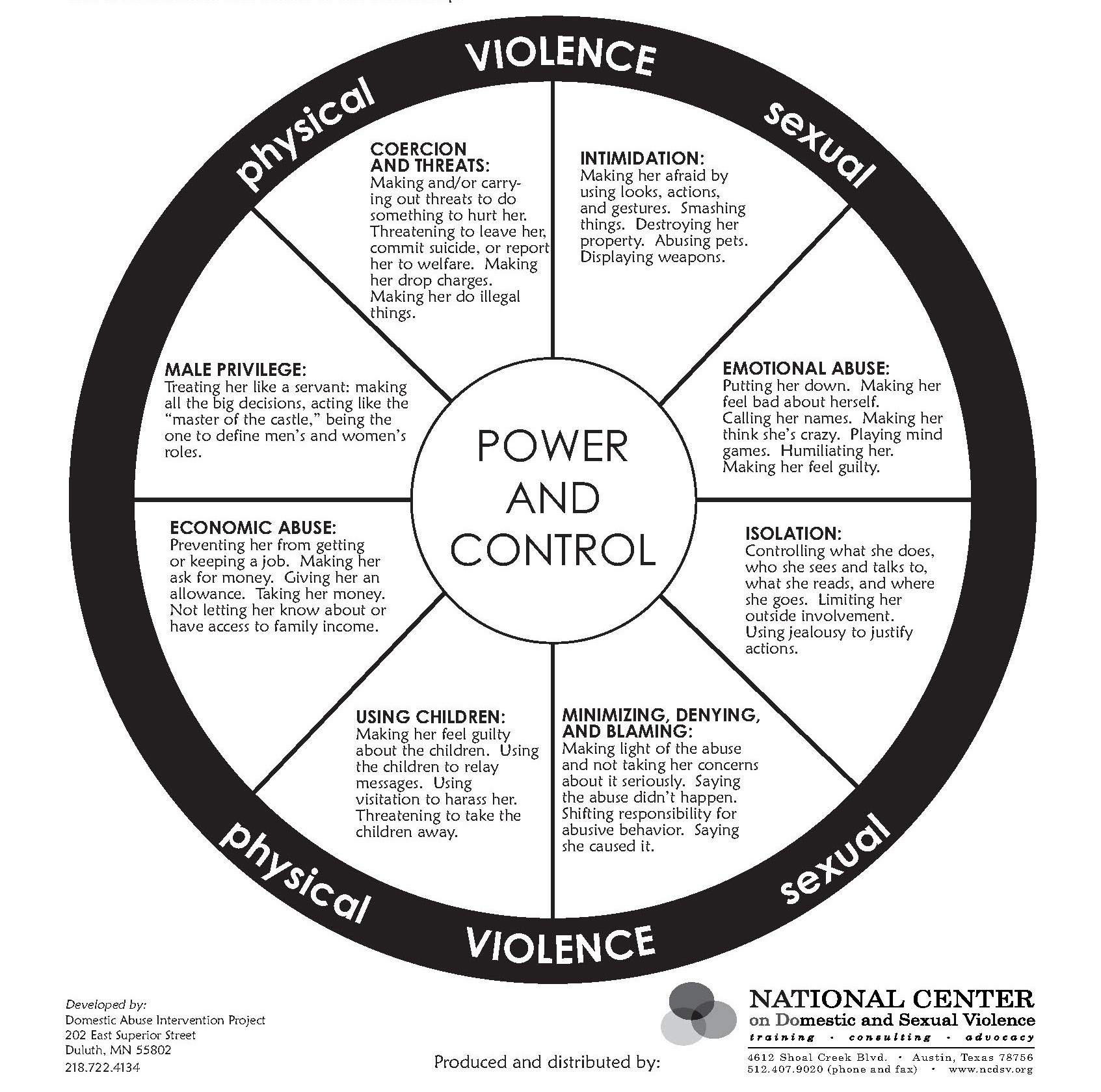Phase 1: Tension building stage
- The Abuser is frustrated and becomes increasingly tense, jealous, and verbally abusive
- Tension mounts between the couple
- The Victim denies fear, anger, and any history of violence
- The Victim may accept blame for any problems in an attempt to keep the peace.
Phase II: Acute battering stage
- Tension increases until it reaches an explosive episode
- The violence is most severe at this time
- At this stage, the Victim’s main concern is survival
- Escape feels impossible. The victim often stays calm, hoping to “wait out the storm”
- The victim may side with the abuser and not cooperate with those there to help
Phase III: Hearts & Flowers Stage
- The abuser is sorry and often very loving and kind
- The abuser promises to change and says it won’t happen again
- The abuser is afraid the victim may leave, and attempts to make them feel guilt over
breaking up the family
- The victim wants to believe the abuse will stop
- As time goes on, the “hearts & flowers stage grows shorter, eventually ending,
leaving the other phases to repeat.
Physical and sexual assaults, or threats to commit them, are the most apparent forms of domestic violence and are usually the actions that allow others to become aware of the problem. However, regular use of other abusive behaviors by the batterer, when reinforced by one or more acts of physical violence, make up a larger system of abuse. Although physical assaults may occur only once or occasionally, they instill threat of future violent attacks and allow the abuser to take control of the woman’s life and circumstances.
The Power & Control diagram is a particularly helpful tool in understanding the overall pattern of abusive and violent behaviors, which are used by a batterer to establish and maintain control over his partner. Very often, one or more violent incidents are accompanied by an array of these other types of abuse. They are less easily identified, yet firmly establish a pattern of intimidation and control in the relationship.

